Embarking on an adventure with children to Cueva de las Manos and the adjacent Pinturas River Canyon feels like a time-travelling journey, where ancient art and nature converge in a jawdropping spectacle. At the heart of our travel ethos is our desire to educate our children through astonishment; this extraordinary destination perfectly embodies this philosophy. If you plan to visit Cueva de las Manos with kids, be ready to experience something unique and awe-inspiring.
Picture this: cave art dating back 8000 years, set against the backdrop of a lush valley that served as home to these ancient artists during winter. This UNESCO World Heritage site is a place where the echoes of the past resonate vividly, creating an immersive experience where ancient history comes alive for curious young minds.

A Brief History Of “The Cave of the Hands”
The name “Cueva de las Manos” comes from the hundreds of human hand stencils adorning the rock walls in intricate collages. This ancient art was made in multiple waves of visitors to the area from 7,300 BC to 700 AD and provides a fascinating glimpse into the rich history and artistic expression of the people who who etched their presence on this remarkable cave.
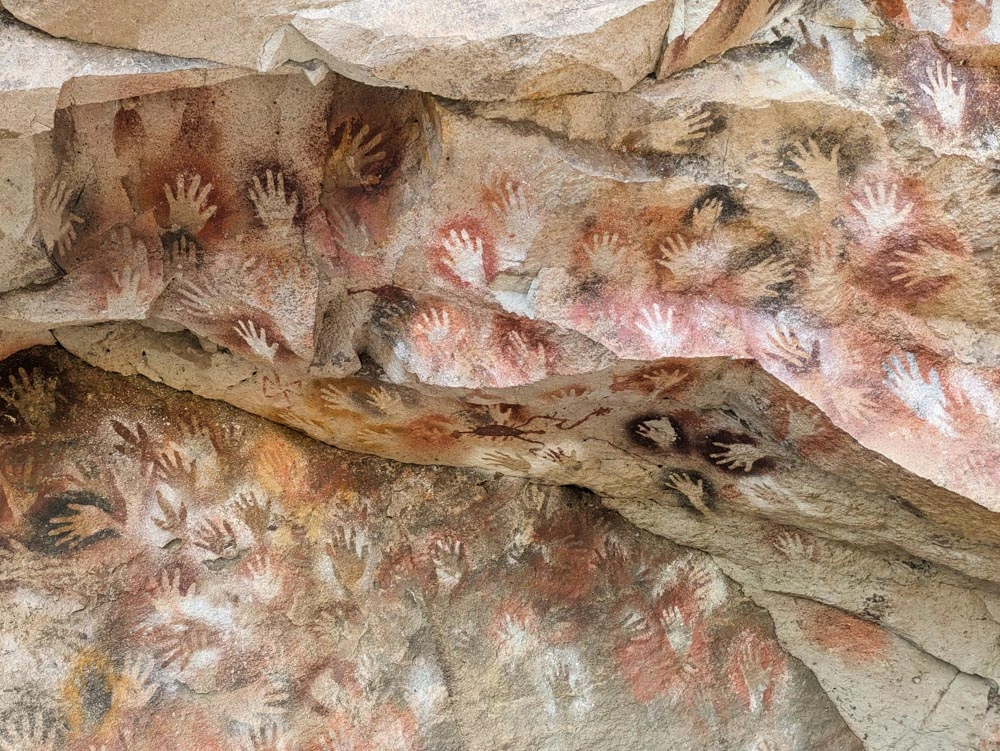
Widely considered amongst the best evidence of early South American hunter-gatherers, the area has now been designated a National Historic Monument in Argentina and a UNESCO World Heritage Site.
Next to the cave is Cañadón del río Pinturas, the valley of the Pinturas River, and this fertile crescent is almost certainly what attracted these hunter-gatherers to the area. The canyon is perfect for seeing out the winter, offering natural shelter and a ready supply of firewood crucial for enduring the unforgiving Patagonian winters. Guanaco also took refuge in the valley in the winter months, making them easy to hunt. Guanaco were an essential resource for these ancient people, being not only a source of food but also of leather, tendons to make rope, leather and bone.
The canyon stands as both a testament to the strategic choices of survival and a living canvas of prehistoric life.
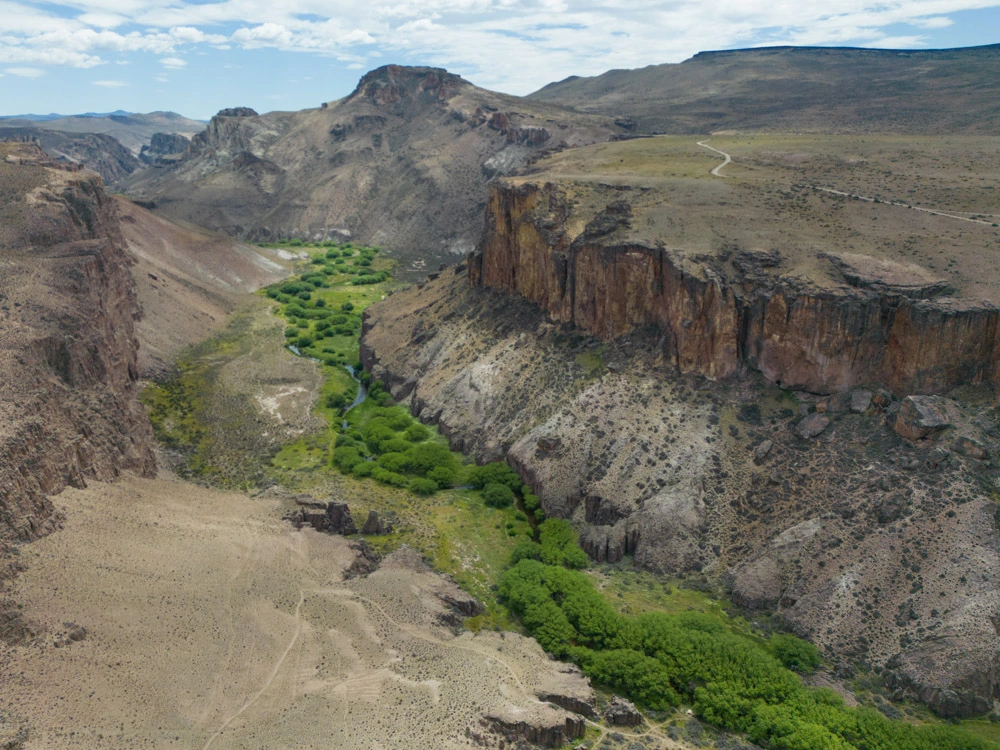
Getting to Cueva de las Manos With Kids
The caves are located about 100 miles south of Perito Moreno in the Santa Cruz Province and make an excellent stop-off for people travelling Route 40. We made the visit while travelling from Coyhaique to El Chalten.
Navigating your way to the Cueva de las Manos is a bit of a rocky ride as the caves are a modest detour off Ruta 40 down a rough track. If heading from the south, you turn off the tarmacked road just after Bajo Caracoles, and it is about an hour’s drive from there to the caves.
If approaching from the North, you turn off Ruta 40 shortly after Estancia La Criolla, and from there, it takes around 40 mins to reach the cave.
Whichever way you come, brace yourself for a less-than-smooth journey; in places, the road resembles a roller coaster in dire need of maintenance.
Once you arrive at the main tour office, there is a reception where you can buy your tickets (ARG$2000 per adult, children under 12 free of charge), and some unique stickers and key rings are also available here. At the time of the visit, you could only pay in cash.
We had a firm rule when driving in Patagonia,: never leave our car parked up with our bags in. This was one place we were happy to break that rule. The car park is very remote and well attended by the rangers.
There are also toilets here and a small kiosk where you get a cup of coffee and a chocolate bar — ideal for a quick pick-me-up, but if you want anything more substantial, you will need to bring food with you.
If you prefer a hassle-free approach, day trips are available, departing from locations like Los Antigos and Puerto Marino and offering a convenient way to reach the caves.
The Tour of Cueva de las Manos
The tours operate hourly and are available in both Spanish and bilingual (Spanish and English). Upon our arrival, the next English tour had a two-hour wait, so we decided to take the Spanish speaking tour. Despite our Spanish proficiency being more geared towards ordering meals than deciphering ancient cave art, we managed to grasp some details. Luckily, a friendly Argentinian fellow graciously translated crucial bits, ensuring we didn’t miss out on the fascinating insights!
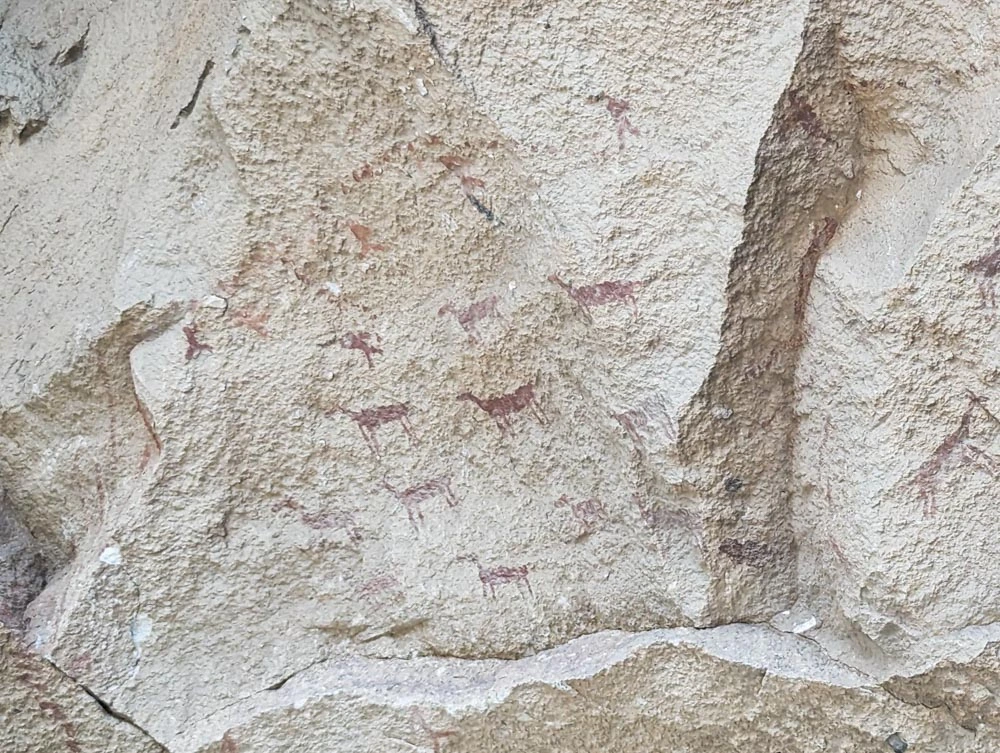
The tour typically lasts between an hour and an hour and a half, depending on how many questions are asked. On the tour, there is limited shade from the sun, so be sure to bring plenty of water and sunblock. Before you begin, you will also be given hard hats due to the slight risk of falling rocks.
The guide leads you down a well-constructed path to witness the ancient paintings. A notable surprise was that these paintings adorn a reasonably exposed cave wall and have survived despite seemingly being weathered by the elements. It left us pondering how these remarkable artworks endured for 8000 years, especially in a region where roads struggle to withstand a single winter.

We will leave explaining the intricacies of this incredible art to your guide as our rememberings would not do it justice, but we were blown away by the details of the paintings and what they represented. One thing that struck us was that, perhaps, part of the reason these ancient people made these hand prints was to say “we were here”, in much the same way people adorn the walls and signs of Patagonia with their own custom stickers.

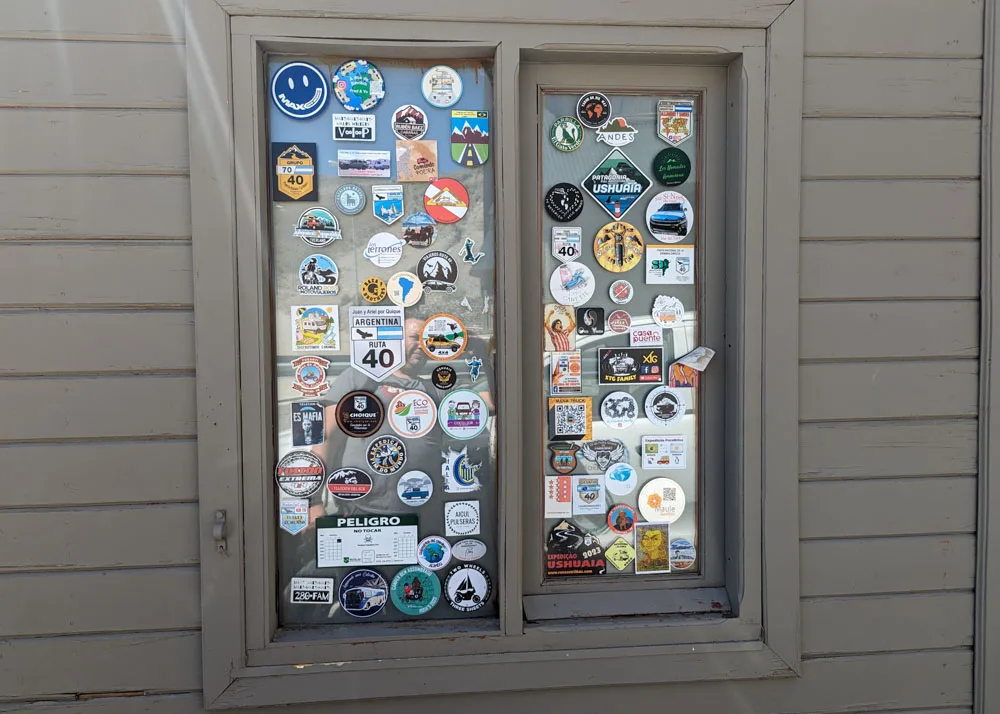
Exploring Cañadón del río Pinturas With Kids
The valley of the Pinturas River, which runs next to the cave, is nearly as spectacular as the paintings. This fertile green crescent sits in sharp contrast to the arid landscape and looks like the Garden of Eden against the dry backdrop.
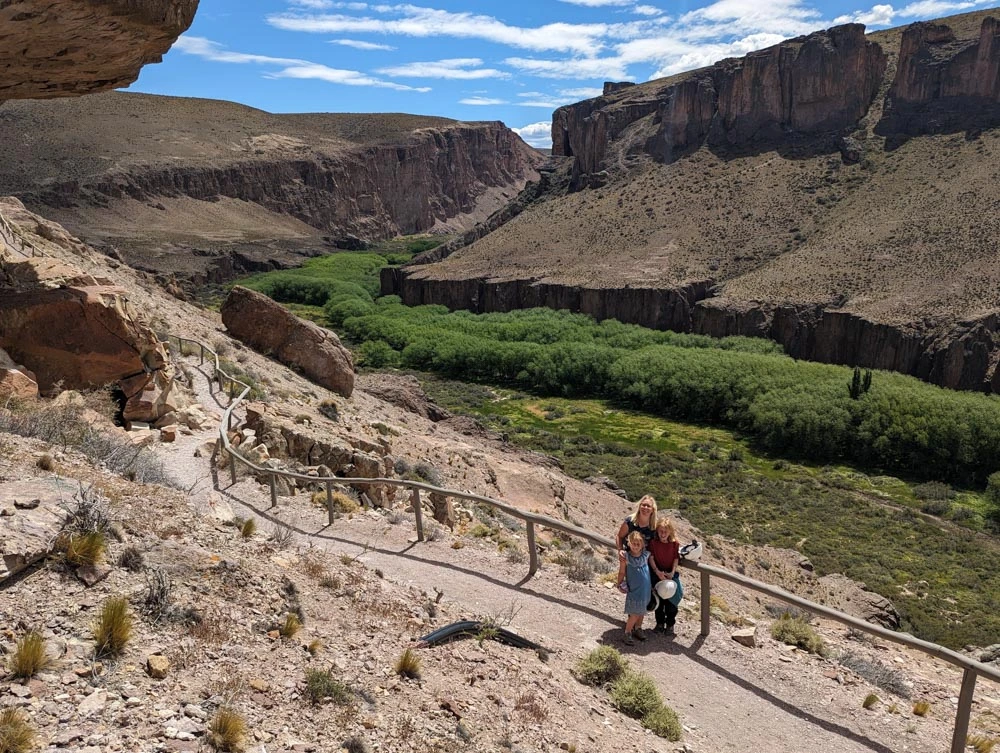
The valley is accessible, and a beautiful short walk can be done from near the main ticket office that takes you through and around the other side of the valley:
As with the cave tour, there is very little shelter from the sun, so be sure to take plenty of water and sunblock.
Have We Missed Anything About Visiting Cueva de las Manos With Kids?
We hope you find visiting this incredible place as rewarding as we did; our visit here was a highlight of our trip to Patagonia. If anything here needs to be updated or you think we need to include anything, please let us know in the comments below.
The Spencer Family

